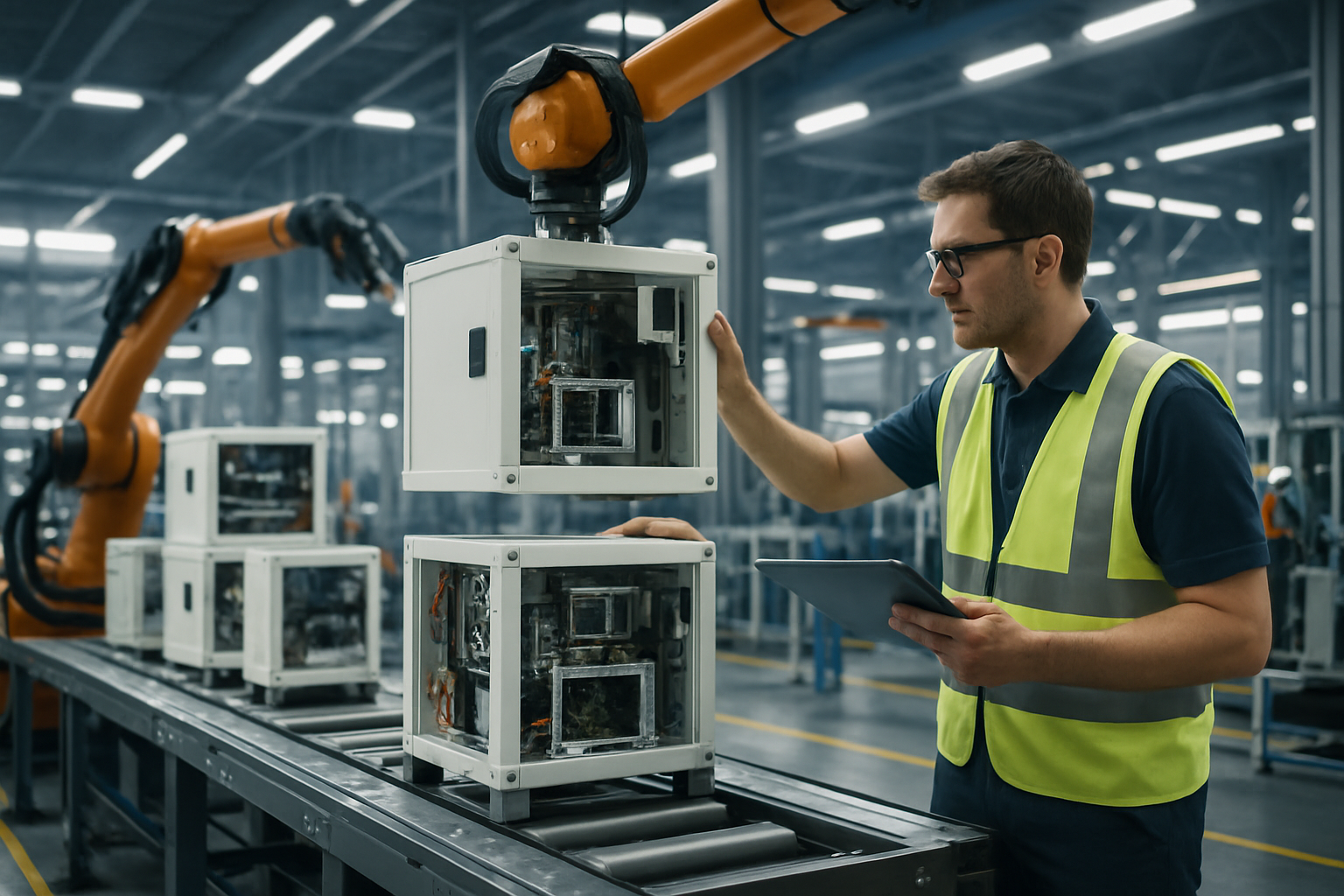Adaptive Manufacturing: Reshaping Production Paradigms
The convergence of advanced technologies and evolving consumer demands is ushering in a new era of manufacturing flexibility. Adaptive manufacturing, a revolutionary approach to production, is gaining traction across industries. This innovative methodology allows companies to swiftly adjust their production processes, responding to market fluctuations and customer preferences with unprecedented agility. As businesses seek to optimize operations and stay competitive, adaptive manufacturing emerges as a game-changing strategy.

Core Principles of Adaptive Manufacturing
At the heart of adaptive manufacturing lies a set of guiding principles that differentiate it from conventional production methodologies:
-
Real-time Responsiveness: Adaptive systems continuously monitor market trends, supply chain data, and production metrics to make instantaneous adjustments.
-
Modular Design: Production lines are built with interchangeable components, allowing for quick reconfiguration to accommodate different products or processes.
-
Data-Driven Decision Making: Advanced analytics and machine learning algorithms process vast amounts of data to optimize production parameters and predict future needs.
-
Scalability: Adaptive manufacturing systems can easily scale production up or down based on demand, without significant capital investment.
-
Customization Capability: The ability to produce small batches or even single units efficiently, catering to the growing demand for personalized products.
Technological Enablers of Adaptive Manufacturing
The realization of adaptive manufacturing relies heavily on cutting-edge technologies that facilitate seamless integration and control:
-
Advanced Robotics: Collaborative robots and autonomous guided vehicles provide the physical flexibility needed to reconfigure production lines.
-
Additive Manufacturing: 3D printing technologies enable rapid prototyping and production of custom parts, reducing lead times and inventory costs.
-
Industrial Internet of Things (IIoT): A network of sensors and connected devices provides real-time data on every aspect of the manufacturing process.
-
Cloud Computing: Centralized data storage and processing power allow for complex simulations and predictive modeling.
-
Artificial Intelligence and Machine Learning: These technologies enable systems to learn from past data and make intelligent decisions without human intervention.
Impact on Business Models and Strategies
The adoption of adaptive manufacturing is catalyzing profound changes in how businesses operate and compete:
-
Just-in-Time Production: Companies can minimize inventory costs by producing goods only when needed, reducing waste and improving cash flow.
-
Mass Customization: Adaptive systems make it economically viable to offer personalized products at scale, opening new market opportunities.
-
Rapid Product Development: The ability to quickly prototype and test new products accelerates innovation cycles and time-to-market.
-
Resilient Supply Chains: Adaptive manufacturing allows companies to quickly pivot production in response to supply chain disruptions or changing regulations.
-
Sustainable Operations: By optimizing resource usage and reducing waste, adaptive manufacturing aligns with growing sustainability imperatives.
Challenges in Implementing Adaptive Manufacturing
While the benefits of adaptive manufacturing are compelling, several challenges must be addressed for successful implementation:
-
High Initial Investment: The costs associated with acquiring advanced technologies and retrofitting existing facilities can be substantial.
-
Skill Gap: The workforce needs to be upskilled to operate and maintain complex adaptive systems, requiring significant training investment.
-
Data Security: The increased reliance on data and connectivity raises cybersecurity concerns that must be robustly addressed.
-
Cultural Resistance: Transitioning from traditional manufacturing paradigms to adaptive systems may face resistance from employees accustomed to established processes.
-
Regulatory Compliance: Rapidly changing production processes must still adhere to industry regulations and quality standards, necessitating new compliance strategies.
Actionable Strategies for Embracing Adaptive Manufacturing
• Conduct a thorough assessment of current manufacturing processes to identify areas ripe for adaptive implementation.
• Invest in pilot projects to test adaptive manufacturing concepts on a small scale before full-scale deployment.
• Develop partnerships with technology providers and research institutions to stay abreast of the latest advancements in adaptive manufacturing.
• Create cross-functional teams that bring together IT, operations, and business strategy to ensure holistic implementation.
• Implement continuous learning programs to upskill the workforce and foster a culture of innovation and adaptability.
As industries continue to evolve in an increasingly dynamic global marketplace, adaptive manufacturing stands out as a crucial enabler of competitiveness and growth. By embracing this innovative approach, businesses can position themselves to respond swiftly to market changes, optimize resource utilization, and deliver personalized products with unprecedented efficiency. While challenges exist, the potential rewards of adaptive manufacturing make it a compelling strategy for forward-thinking companies aiming to thrive in the next era of industrial production.





